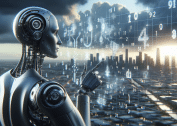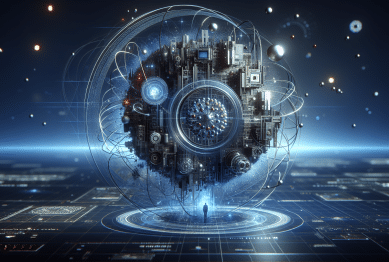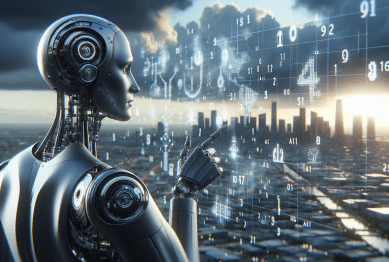Curious about how artificial intelligence is changing daily experiences? This in-depth guide explores AI’s influence in smart homes, healthcare, cars, retail, and education, revealing practical ways it transforms routine activities and empowers innovative solutions.
Understanding Artificial Intelligence’s Role in Daily Technology
Artificial intelligence, often referred to as AI, shapes the digital landscape in unexpected ways. Many people interact with AI systems without even knowing it. From voice assistants on mobile devices to algorithms recommending playlists, AI finds ways to streamline and personalize technology. The rapid adoption of AI is fueled by data-driven approaches that allow computers to learn from patterns and previous interactions. This capability enables systems to predict what a user might like, anticipate needs, or alert someone to potential issues in applications ranging from finance to entertainment.
One of the most significant benefits of artificial intelligence is its potential to adapt continuously. Unlike traditional programming, which relies on fixed instructions, machine learning empowers AI systems to improve through experience. Large datasets, cloud computing, and enhanced connectivity have created a fertile ground for advanced machine learning strategies, especially in key areas like image recognition and natural language processing. These improvements make interfaces intuitive and responsive, reducing manual input and supporting more seamless interactions.
AI integration goes well beyond visible features. It powers fraud detection in banking, enhances cybersecurity systems, and supports large-scale logistics management in supply chains. In smart home devices, AI-enabled sensors adjust lighting, temperature, and security based on patterns they detect. The potential of these technologies lies in their ability to automate repetitive tasks, freeing up time for more meaningful work—making AI more than just a technological trend, but a practical part of everyday life.
Smart Homes and Connected Living Spaces
The adoption of smart home technology continues to grow, with artificial intelligence playing a pivotal role. Connected devices—like thermostats, security systems, smart speakers, and even refrigerators—rely on AI to understand user habits and automate frequent tasks. By learning routines, these devices adjust settings seamlessly. For example, a smart thermostat might reduce heating when no one is at home and resume when it senses your return, saving energy and money. Integration with voice-activated assistants, backed by AI, means turning on lights or playing music can be as simple as making a verbal request.
Routine management gets streamlined when AI connects multiple devices. With interoperable systems, a security camera can communicate with smart locks and lighting. If motion is detected outside at night, the AI could automatically illuminate the area and notify the homeowner. The continuous analysis of behaviors, combined with predictive algorithms, opens up a world where home environments adapt to unique family schedules. The technology’s potential for accessibility is vast—automating doors, windows, or appliances for those with mobility challenges, for instance.
Although convenience is a driving factor, privacy and data security remain key considerations. AI systems in homes collect vast amounts of personal information to enhance their predictions. Responsible development and transparent privacy protections are essential to maintain user trust. Providers and organizations increasingly prioritize these safeguards, enabling residents to benefit from intuitive assistance while feeling secure about how their data is handled. Connected living will likely become even more personalized, with AI acting as an invisible but indispensable assistant.
AI in Healthcare: Improving Diagnosis and Personalized Care
Artificial intelligence is revolutionizing the field of healthcare by supporting more accurate diagnostics and enabling tailored treatments. Sophisticated AI models analyze medical images faster than humans and flag subtle anomalies that could indicate early-stage conditions. In radiology, computer vision has improved detection rates for diseases such as cancer and pneumonia by examining thousands of scan images in seconds, often enhancing doctor performance rather than replacing it. This technology’s ability to scale across large populations has led to more widespread and timely interventions.
Beyond diagnostics, AI is transforming the way treatment plans are developed and managed. Algorithms can sort through layers of medical history, genetic data, and lifestyle indicators to suggest custom interventions. For chronic disease management, wearable devices collect ongoing data, allowing AI to identify warning signs and suggest preventive measures to both patients and healthcare providers. Recent advancements show promise for AI-powered chatbots and virtual nursing tools, which offer guidance, remind users to take medications, and answer common health-related questions at any time.
Data privacy remains a central focus in AI-driven healthcare. Regulations like HIPAA and GDPR encourage responsible handling of sensitive health records. Solutions that prioritize patient consent and anonymize personal data are gaining traction. When well-managed, AI’s impact in healthcare extends to cost savings, improved patient outcomes, and broader access to health resources—ensuring care is not just advanced but also equitable and secure.
Connected Cars and AI-Powered Transportation
The automotive industry stands on the cusp of transformation thanks to artificial intelligence. Advanced driver-assistance systems use real-time data from sensors, cameras, and GPS to monitor traffic, identify hazards, and even apply the brakes when necessary. These smart features are precursors to fully autonomous vehicles, which could reshape how people commute and how goods are delivered. AI in connected cars enables predictive maintenance by analyzing engine patterns, helping prevent breakdowns and improving safety on the road.
Navigation is another area where AI delivers remarkable value. Instead of static maps, modern GPS apps rely on predictive algorithms that analyze historic and real-time traffic data. These systems propose alternative routes, flag road hazards, and respond to changing conditions quickly. AI also powers ride-sharing platforms, optimizing vehicle allocation and matching passengers efficiently, saving time and resources.
As vehicles become more connected, concerns over cybersecurity and data use become increasingly prominent. Cars collect and transmit massive amounts of data, from location to driver behavior. Manufacturers and regulators are working together to strengthen security protocols and transparency about how automotive data is used. Continued research into blockchain and edge computing may play an important role in establishing trust for the next generation of smart transportation.
Retail and AI: Shaping Shopping Experiences
Shopping has never been more personalized, thanks to artificial intelligence. Recommendation engines on e-commerce platforms leverage AI to suggest products customers may like based on previous searches, purchases, and even the browsing activity of similar users. AI-driven chatbots offer instant responses to questions about product details or order tracking, while virtual assistants can guide shoppers through entire transactions. All this reduces abandoned carts and enhances user satisfaction, building loyalty in the process.
Brick-and-mortar stores benefit as well. AI is used to forecast inventory demand, set dynamic pricing, and optimize staffing levels. Vision-based systems can recognize when shelves need restocking or analyze shopper behavior in-store, all while maintaining privacy standards. Facial recognition, when responsibly used, might even speed up checkout lines. Some companies are implementing cashier-less stores where customers “grab and go,” with AI automatically tallying and charging for items as they leave.
Despite benefits, artificial intelligence in retail does generate challenges, especially around ethics and bias. Algorithms must be designed carefully to ensure recommendations are fair and do not unintentionally exclude groups of shoppers. Transparent use of customer data, with opt-in features and clear explanations, helps create a responsible shopping experience. Industry leaders are committed to regular audits of their AI systems to guard against misuse, reinforcing public confidence in this evolving ecosystem.
AI-Enabled Learning: The Future of Education
Artificial intelligence is introducing new dynamics to education, making learning more adaptive and student-centered. Personalized learning platforms analyze performance data to suggest content that matches a student’s pace and style, supporting both remediation and enrichment. AI tutors can answer questions in real-time, clarify complex concepts, or provide instant feedback on assignments—breaking down barriers to access and widening the reach of quality education.
Teachers benefit from AI-powered tools as well. Intelligent systems streamline grading, recommend differentiated instruction strategies, and identify those who may need extra support, freeing up valuable time for relationship-building and creative teaching. Institutions are deploying predictive analytics to forecast trends in enrollment or performance, allowing administrators to address issues early and allocate resources effectively.
Ethics and equity remain core considerations in AI-enhanced education. Developers and educators collaborate to design tools that accommodate diverse needs and learning preferences. Privacy safeguards and responsible data collection ensure technology assists rather than replaces teaching efforts. As AI continues to evolve, ongoing professional development and transparency will be vital in keeping both learners and educators empowered in an AI-powered classroom.
References
1. National Institute of Standards and Technology. (n.d.). Artificial Intelligence. Retrieved from https://www.nist.gov/artificial-intelligence
2. European Commission. (n.d.). Artificial Intelligence in Healthcare. Retrieved from https://digital-strategy.ec.europa.eu/en/policies/ehealth-artificial-intelligence
3. U.S. Department of Energy. (n.d.). The Role of Artificial Intelligence in Connected Homes. Retrieved from https://www.energy.gov/eere/buildings/articles/role-artificial-intelligence-connected-homes
4. World Economic Forum. (n.d.). Artificial Intelligence and the Future of Jobs. Retrieved from https://www.weforum.org/agenda/2021/02/artificial-intelligence-future-of-jobs/
5. Brookings Institution. (n.d.). The Ethics and Governance of Artificial Intelligence. Retrieved from https://www.brookings.edu/research/the-ethics-and-governance-of-artificial-intelligence/
6. Harvard Graduate School of Education. (n.d.). Artificial Intelligence in Education. Retrieved from https://www.gse.harvard.edu/news/uk/21/06/artificial-intelligence-education









